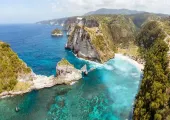Getting Back to Nature: A Guide on Where to Stay in Yellowstone National Park
Catalogue
- Basic Considerations
- Getting to Yellowstone
- Mammoth Hot Springs Hotel
- Tower Roosevelt Yellowstone and the Lamar Valley
- Canyon Village and Yellowstone Waterfalls
- Ylake yellowstone hotel and cabins
- Old Faithful Lodge and the Geyser Basins
- Grand Teton Camping and Places to the South
Show More
The summer travel season is in full swing and national parks across the United States are seeing visitors return in large numbers. This is particularly true for normally popular destinations like Yellowstone National Park. The crown jewel in America’s national park system has mostly reopened after closing due to the ongoing COVID-19 pandemic. Those planning trips to Yellowstone will want to keep their eye on the availability of lodging in and around the park. Several campgrounds and accommodations in various park sections are scheduled to remain closed throughout 2020. In this guide we provide some places to consider staying if you’re venturing into the Greater Yellowstone area this summer. Remember to always observe local conditions and continue doing your part to help stop the spread of COVID-19. Without further ado, here is our guide to places to stay in and around Yellowstone National Park.
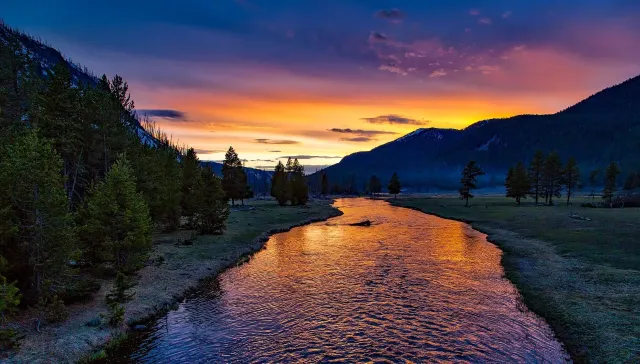
The first thing to recognize is that Yellowstone is big. Like really big! At nearly 5,500 mi2 (9,000 km2) in area, Yellowstone National Park straddles parts of Idaho, Montana, and Wyoming, abutting national forests on all sides. It is the centerpiece of the Greater Yellowstone Ecosystem, the largest continuous stretch of undeveloped land in the continental United States. Traveling between major regions in the park is only practical via motorized transport. A network of roads arranged roughly in a figure-8 pattern are the park’s main arteries. For most visitors, the north entrance (open year-round) provides convenient access. The south entrance connects to the John D. Rockefeller, Jr. Parkway and Grand Teton National Park. If you’re planning a visit to Yellowstone, make sure to consult the park map and determine which areas you plan to visit. This will help you narrow down your lodging options. Expect campgrounds and lodges to fill up early, especially now that visitor numbers have increased and the park is operating at marginally reduced capacity. August is a peak travel month at Yellowstone. Don’t wait until the last minute to find a place to stay and always make sure to have a backup.

Obviously part of the draw at a pristine wilderness area like Yellowstone is the remoteness. This does pose some challenges for getting yourself to the park, however. Here are a few basic options. If you’re looking to arrive by air, Jackson Hole Airport (JAC) located inside Grand Teton National Park provides the closest service to Yellowstone’s southern entrance. Yellowstone Regional Airport (COD) in Cody, Wyoming is the most proximate to the park’s eastern entrance. Other options requiring longer drives are Billings Logan International Airport (BIL) in Billings, Montana and Bozeman Yellowstone International Airport (BZN) in Bozeman. These will allow you to access the park’s northern entrance. Aside from flying, it’s fair to say a considerable portion of visitors to Yellowstone make it part of a longer road trip. Driving is certainly an advisable option this season given it avoids the hassle of air travel and allows you to better maintain appropriate physical distancing during your travel. Plus, the entire region is an outstanding driving destination. Once you arrive, you’ll need to purchase a pass to access the park. This can be done in-person or online and costs $35 for non-commercial vehicles, $30 for motorcycles or snowmobiles, and $20 for bicycles or walk-ins. Annual passes are available for $70.
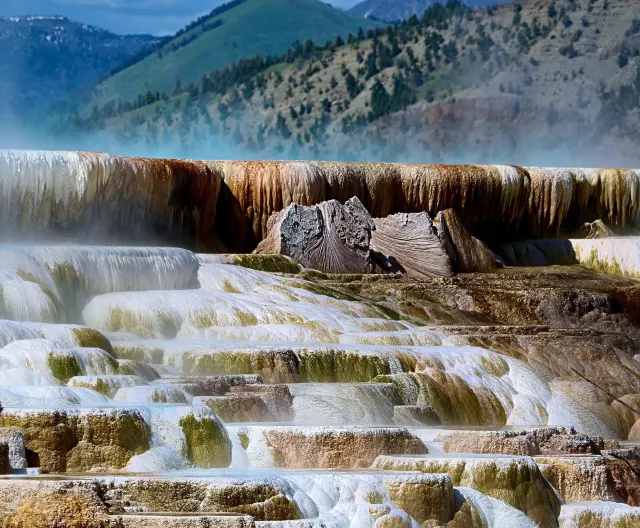
Yellowstone’s north entrance leads into the Mammoth Hot Springs area. The park headquarters are located here and it’s a good place to stock up on provisions. At the time of writing, the Mammoth Hot Springs Hotel is scheduled to remain open through October 12, 2020. The hotel offers several room choices including “frontier cabins,” “hot tub cabins,” and “premium hotel rooms.” The cabins offer basic sleeping options in addition to shower, sink, and toilet amenities. If you upgrade to the hot-tub cabin, you’ll have access to a private 6-person hot tub set within a fenced enclosure. The hotel's premium rooms are what you’d expect from a standard hotel experience. For those not intending to lodge here, you can still make use of the terrace grill, gift shop, as well as the area’s general store and Post Office. In all cases, you will want to book well in advance of your scheduled arrival as these are popular lodging options. Aside from the Mammoth Hot Springs Hotel, lodging options are limited this year due to COVID-19 closures. The Indian Creek and Mammoth Campground locations are closed for the season. Those planning to camp will need to continue on to other areas further inside the park.
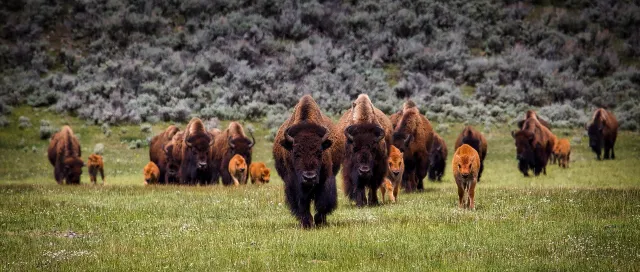
In late summer and early autumn, Yellowstone’s herds of wild bison rut in the pastures around Lamar Valley. In addition to the iconic bison, this is arguably the best place in the lower 48 states for seeing larger mammals such as timber wolf, coyote, and grizzly bear. Visitors planning to spend time in Yellowstone’s Northeast will need to make lodging arrangements elsewhere in the park or consider backcountry camping. Essentially all camping and lodging options in the Tower-Roosevelt area closed for the remainder of 2020. This includes the Pebble Creek Campground, Roosevelt Lodge and Cabins, Slough Creek Campground, and Tower Fall Campground. Additional amenities such as the Tower Fall General Store, the Roosevelt Store, and the horseback and stagecoach ride services are likewise closed for 2020. If you’re entering Yellowstone through the northeast entrance, you can still stop for gas at the Tower-Roosevelt service station; but if your goal is to spend significant time in the Lamar Valley, your best option may be backcountry camping, which will require a permit. Use the park’s website to submit your Backcountry Permit Application no more than 48 hours prior to your intended arrival. If you want to reserve a specific campsite, you will also need to file a Backcountry Reservation Application. This takes approximately 4-7 days to process.
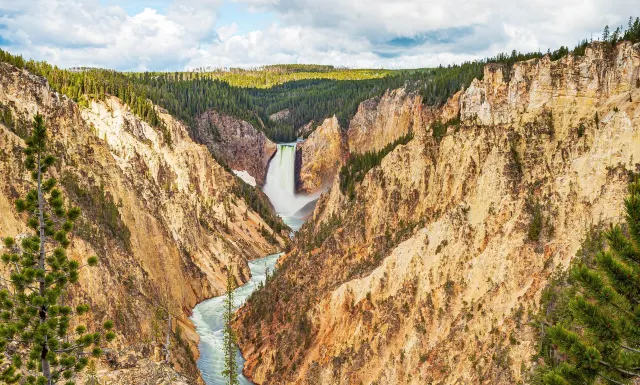
Next to Old Faithful, Yellowstone’s most recognizable attractions are the two large waterfalls on the Yellowstone River in the park’s central section. These picture postcard locations fill countless scrapbooks and will no doubt make a great addition to your Instagram or Trip Moments profiles. The good news is that accommodations and lodging in the Canyon Village area are open. The bad news is that some amenities such as the Canyon Lodge ice creamery are closed. At the time of writing, the Canyon Campground is scheduled to remain open through September 20, 2020, while the Canyon Lodges and Cabins are slated to close in early October. The area’s general store as well as the service station are open; however, the Post Office is closed. Ideal viewing times for the waterfalls tend to occur in spring when the Yellowstone River is flush with snowmelt and the waterfalls reach their peak volume. As the summer stretches on, flow rates over the falls diminish considerably. The Canyon Lodge and Cabins constitute the park’s largest accommodations with over 500 rooms and cabins available for use. Nevertheless, it is still advisable to plan ahead of your scheduled arrival and secure your reservation online.
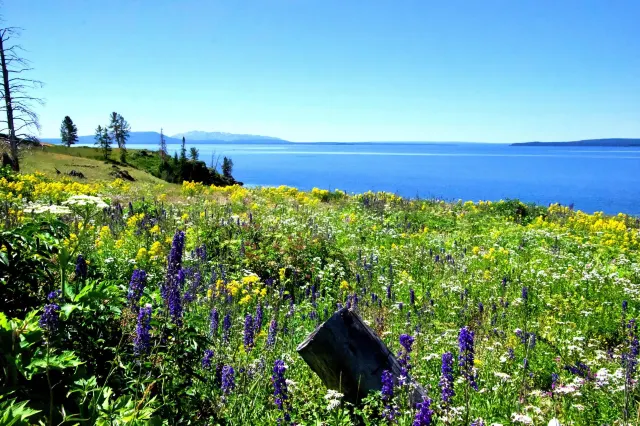
As the largest freshwater lake above 7,000 ft (2,100 m) in North America, Yellowstone Lake is a dominant feature in the park. Boating and fishing are permitted in many of the park’s countless lakes, including Yellowstone Lake. Boat launch access is available in both the Lake Village and Grant Village areas. A boating license is required. Anglers will covet the chance to fish the park’s pristine waterways, though make sure to obtain the proper fishing license. For those interested, the park is home to many species including Yellowstone cutthroat, several types of trout, and mountain whitefish. Those planning to spend some time on the waters this year will want to look for lodging and accommodations in the Bridge Bay or Lake Village areas. The Lake Yellowstone Hotel & Cabins are slated to remain open through October 4, 2020, while the Lake Lodge Cabins will close a week earlier on September 27. Those traveling to Yellowstone in an RV should take note that the Fishing Bridge RV Park is closed for the remainder of the season. Lake enthusiasts might consider heading south towards the West Thumb portion of Yellowstone Lake where they can camp at Grant Village Campground. This provides convenient access to the Geyser Basins and Old Faithful.
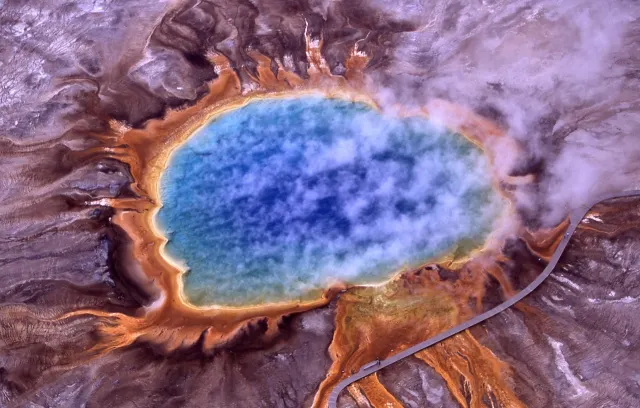
Yellowstone’s most, shall we say, reliable attraction is undoubtedly Old Faithful, the world’s most famous geyser. The entire Yellowstone basin is an active volcanic area. The park’s numerous cliffs and valleys are a patchwork of volcanic rock, exposed and weather-worn over centuries into unimaginably beautiful forms. If you’re traveling from the south or Lake Yellowstone areas, you will cross the Continental Divide. A favored thing to do is to straddle the boundary near Craig Pass and Isa Lake on your way towards Old Faithful. The geysers scattered throughout the Upper- and Lower Geyser Basin represent the largest concentration of geysers in the world. Lodging options in the area are relatively plentiful. The Old Faithful Inn is open through October 12, 2020. The Old Faithful Lodge Cabins will close a week earlier on October 4 and the Old Faithful Snow Lodge, which also has cabins, is scheduled to remain open until October 25. Needless to say, this is an exceedingly popular area of the park and one where you are encouraged to wear and mask and practice adequate physical distancing, especially along the walkways and sightseeing locations around the geysers. If you are coming into Yellowstone from the west entrance, consider camping at the Madison Campground, which is open until October 18. This will provide you straightforward access to Geyser Basin.

One popular travel itinerary involves basically moving through Yellowstone from north to south. Exiting the park via the south entrance brings you to the John D. Rockefeller, Jr. Parkway and Grand Teton National Park. If you’re traveling this way or if you’re arriving in Yellowstone from the south, both Grand Teton and the Rockefeller Parkway offer camping and lodging options. These provide relatively convenient access to places in Southern Yellowstone; however, they’re a bit far removed to make them practical for day trips further north than say the West Thumb or Old Faithful. Within Rockefeller Parkway you’ll find the Headwaters Lodge & Cabins at Flagg Ranch. You can quickly reach Yellowstone’s south entrance or northern portions of Grand Teton National Park. Campsites are available too. If you’re also planning a visit to Grand Teton, be aware that COVID-19 restrictions have meant some guided activities such as horseback tours, group hiking, and fishing tours are not available this season. Cabins, campgrounds, and RV access are available around Headwaters Lodge. Once into Grand Teton National Park proper, visitors looking for lodging options can elect to make for the Colter Bay Village area. Here too you will find a range of lodging options including cabins, campgrounds, and RV access. Other activities like kayak and canoe rentals are operating on a first come, first served basis at Colter Bay.
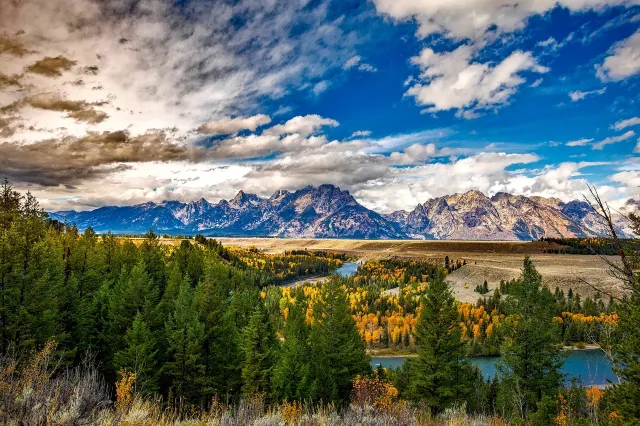
Due to its history and popularity, Yellowstone National Park is a premiere travel destination offering a full-range of amenities and facilities. The park caters to nearly anyone from novice travelers to hearty backwoods enthusiasts. The problem at Yellowstone is not what to see, but how best to see it. No matter your age or experience outdoors, there is something for you to enjoy at Yellowstone National Park. The park’s reputation as an untamed wilderness belies the extensive efforts made to improve accessibility and enjoyment. Due to its popularity, and particularly this year with the concerns surrounding COVID-19, you need to plan your visit to Yellowstone well in advance. When you go, make sure to afford yourself some time to appreciate the geology, the biodiversity, and the true magnificence on offer in the world’s oldest national park.
Trending Travelogues
Popular Trip Moments
Popular Travel Types
Popular Attractions
Popular Destinations
Recommended Attractions at Popular Destinations







Site Operator: Trip.com Travel Singapore Pte. Ltd.



